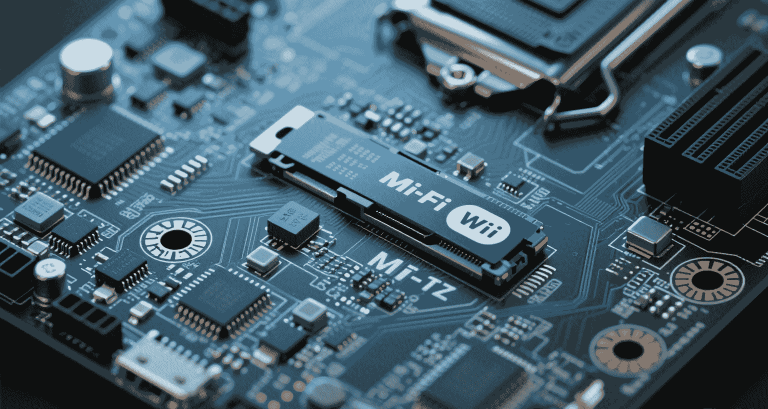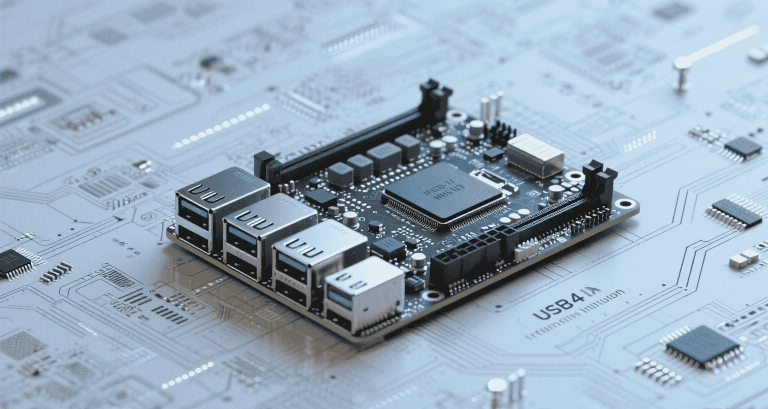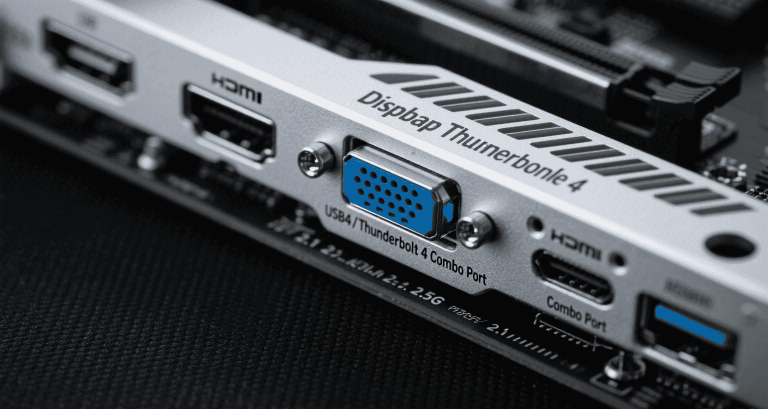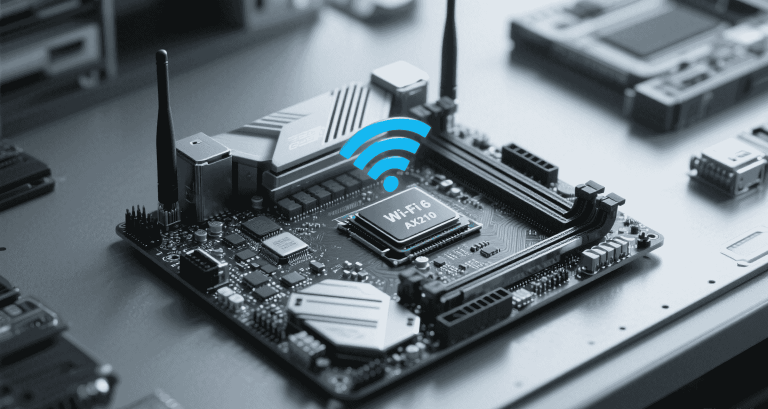Mini-ITX Boards with 6 SATA Ports: A Comprehensive Guide
Discover the best Mini-ITX boards with 6 SATA ports in this comprehensive guide. Find the perfect motherboard for your storage needs.
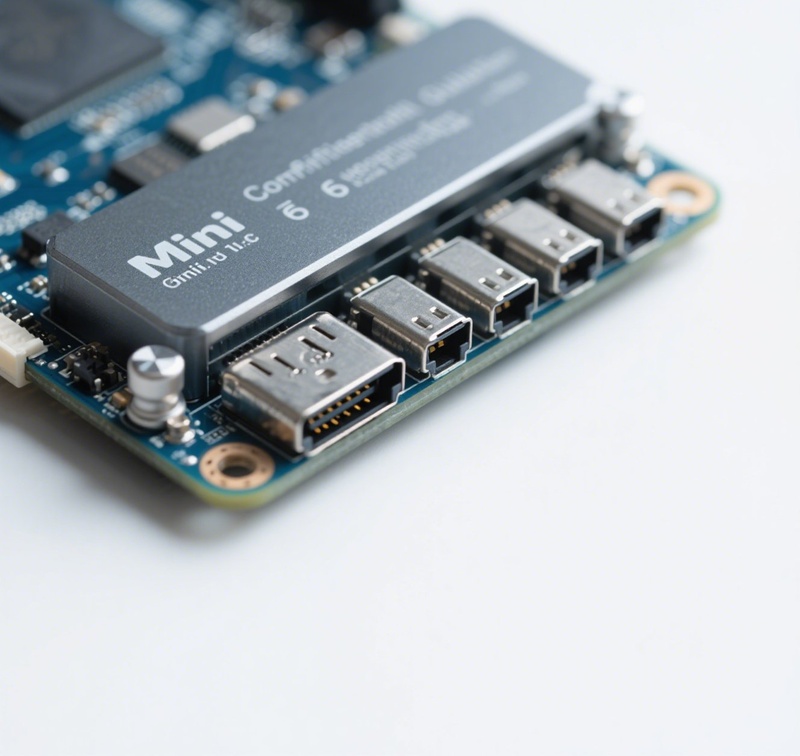
Table of Contents
- Introduction
- SATA Connectivity Requirements
- Hardware Considerations for 6-SATA Mini-ITX Boards
- Benefits of Mini-ITX Boards with 6 SATA Ports
- Drawbacks of Mini-ITX Boards with 6 SATA Ports
- Example Mini-ITX Boards with 6 SATA Ports
- Enclosure Considerations
- Software and RAID Implementation
- Security Considerations
- Cost-Benefit Analysis
- Troubleshooting and Support
- Customization and ODM Options
- Mini-ITX Adoption in Edge and IoT Selection Criteria for Professionals
- Q&A
- Conclusion
“Maximize storage options with Mini-ITX Boards featuring 6 SATA Ports.”
Introduction
Welcome! If you’re planning to build a compact system without compromising storage, Mini-ITX boards equipped with six SATA ports are a great choice. At miniitxboard, I often help customers explore options that balance power, storage capacity, and small form factor design.
Throughout this guide, you and I will look at why these boards matter, how to choose the right one, and what pitfalls to avoid.
SATA Connectivity Requirements
Modern workloads generate more data than ever, from 4K video to virtual machine storage. Six SATA ports give you flexibility to:
- Connect multiple high-capacity HDDs for bulk storage.
- Run SSDs in RAID 0 for performance.
- Combine SSDs and HDDs in a hybrid setup.
- Separate workloads by drive for reliability and speed.
Before you commit, check:
“Does your board support SATA III speeds? Are all ports native to the chipset or some connected via an additional controller?”
Answering these questions up front saves you headaches later.
Hardware Considerations for 6-SATA Mini-ITX Boards
Building with Mini-ITX requires careful planning. Some key factors:
- Chipset: Intel H370 and AMD B450 chipsets are popular for stability.
- Power delivery: Six drives draw significant current; use a reliable PSU.
- VRM cooling: Smaller boards can overheat under load.
Don’t forget to review your case’s drive bay options and airflow paths. A compact build is only effective if it stays cool and stable.
Benefits of Mini-ITX Boards with 6 SATA Ports
There are clear benefits to choosing this setup:
- Compact Footprint: Perfect for tight spaces and portable builds.
- Energy Efficiency: Consumes less power compared to ATX systems.
- Versatility: Build NAS, gaming rigs, or media servers with the same board.
“I’ve seen customers build 40TB file servers in a shoebox-sized enclosure.”
It’s an incredible way to maximize space without sacrificing performance.
Drawbacks of Mini-ITX Boards with 6 SATA Ports
Nothing is perfect. You should consider:
- Limited PCIe Slots: Usually only one slot is available.
- Thermal Constraints: Six drives can produce a lot of heat.
- Higher Costs: Small form factor boards often cost more.
Still, with thoughtful planning, you can mitigate most drawbacks.
Example Mini-ITX Boards with 6 SATA Ports
Consider these popular models:
| Model | Chipset | SATA Ports | M.2 Slot | Wi-Fi |
|---|---|---|---|---|
| ASRock H370M-ITX/ac | Intel H370 | 6 | Yes | Yes |
| Gigabyte B450 I AORUS PRO WIFI | AMD B450 | 6 | Yes | Yes |
| ASUS ROG Strix B450-I Gaming | AMD B450 | 6 | Yes | Yes |
Enclosure Considerations
Choosing the right case matters:
- Check for enough drive bays.
- Ensure proper airflow to avoid overheating.
- Verify PSU compatibility.
Cases like the Fractal Node 304 are excellent for Mini-ITX builds.
Software and RAID Implementation
You can configure RAID directly in BIOS or through your operating system. The table below compares common RAID levels to help you choose the best configuration for your needs:
| RAID Level | Minimum Drives | Main Benefit | Main Drawback |
|---|---|---|---|
| RAID 0 | 2 | High performance (striping) | No redundancy; if one drive fails, all data is lost |
| RAID 1 | 2 | Data redundancy (mirroring) | Only half of total storage capacity is usable |
| RAID 5 | 3 | Balanced performance and redundancy | Rebuild times can be long after a failure |
| RAID 10 | 4 | High performance plus redundancy | Requires more drives; less total capacity than RAID 5 |
When you set up RAID, always consider your priority: speed, redundancy, or a balance of both. If you’re unsure, we at miniitxboard can help you assess your workload and recommend the right configuration
Security Considerations
Remember to:
- Encrypt drives.
- Lock BIOS.
- Secure the enclosure physically.
This protects data against theft and tampering.
Cost-Benefit Analysis
While Mini-ITX boards are more expensive, they save space, power, and noise, making them worthwhile for many builds.
Troubleshooting and Support
If you have issues:
- Test SATA cables.
- Update firmware.
- Contact Miniitxboard for help.
Customization and ODM Options
Suppliers like Supermicro or Tyan offer ODM services for enterprises that need custom features.
Mini-ITX Adoption in Edge and IoT Selection Criteria for Professionals
Mini-ITX boards are becoming a cornerstone of edge computing and IoT deployments thanks to their compact size, low power consumption, and increasingly robust feature sets. If you’re an IT professional evaluating Mini-ITX for these scenarios, there are several key criteria you should carefully assess to ensure long-term reliability and performance.
Below are critical selection criteria you should keep in mind:
- Thermal Performance: Edge deployments often happen in uncontrolled environments. Choose a board with proven thermal resilience and support for wide temperature ranges.
- Power Efficiency: Many IoT devices run on limited or battery-based power. Boards with low idle consumption and efficient power phases help extend operational time and reduce cooling requirements.
- Connectivity: Look for boards with multiple LAN ports, optional Wi-Fi, and diverse I/O headers. This flexibility allows you to integrate sensors, gateways, and control systems.
- Storage Flexibility: Six SATA ports give you the ability to store logs, databases, and cached content locally without needing external storage devices.
- Hardware Longevity: For industrial deployments, select boards rated for extended lifecycle support and compatibility with embedded operating systems.
- Security Features: TPM modules, secure boot options, and hardware encryption support are essential for sensitive IoT applications.
Here’s a practical example: a logistics company deployed Mini-ITX nodes with six SATA ports in a network of remote warehouses. Each node acted as an edge server, collecting inventory data locally and syncing overnight to a central database. Because the boards supported RAID 1, they ensured data redundancy in case of drive failure. Their small size also allowed mounting directly inside industrial cabinets.
“In many edge scenarios, space and power constraints make Mini-ITX the most logical choice, provided you plan for thermal and environmental factors in advance.” — Systems Architect, Industrial Automation Company
At miniitxboard, I recommend you document your requirements carefully, including:
- Expected operational temperatures
- Redundancy and failover needs
- Bandwidth requirements for edge analytics
- Expansion needs over a 3–5 year lifecycle
By aligning your Mini-ITX selection with these criteria, you can build reliable edge and IoT solutions that scale with your business objectives.
Mini-ITX is perfect for IoT:
- Compact size
- Low power
- Robust storage support
Q&A
Q1: Can I build a RAID 10 setup with a Mini-ITX board that has 6 SATA ports?
A: Absolutely. You will need at least four drives. RAID 10 combines mirroring and striping, offering both speed and redundancy.
Q2: Is Mini-ITX suitable for gaming builds?
A: Yes. With a discrete GPU and sufficient cooling, a Mini-ITX system can be as powerful as larger ATX systems.
Q3: Do all 6 SATA ports typically run at full SATA III speeds?
A: Usually, yes, but sometimes 1–2 ports are driven by a secondary controller. Always check the motherboard manual to confirm.
Q4: What power supply do you recommend?
A: Use a high-quality SFX or ATX PSU rated at least 450–500W if you plan to connect multiple drives and a GPU.
Q5: Will six drives generate too much heat in a Mini-ITX enclosure?
A: It depends on airflow. You should select a case with good ventilation and plan for additional fans or an efficient cooling strategy.
Q6: Can I use an M.2 NVMe drive alongside six SATA drives?
A: On most boards, yes. Some boards share bandwidth between M.2 and SATA ports, so check the manual for limitations.
Q7: Are Mini-ITX boards more expensive than ATX boards with similar features?
A: Often they are, due to engineering complexity and compact size. You pay a premium for space efficiency.
Q8: What CPUs are compatible with Mini-ITX motherboards?
A: Compatibility depends on the socket. For example, Intel LGA 1200 and AMD AM4 Mini-ITX boards support mainstream desktop CPUs.
Q9: Is it possible to expand beyond 6 drives?
A: Yes. You can add a PCIe SATA controller card, but remember Mini-ITX typically has only one PCIe slot.
Q10: What are common use cases for these boards?
A: Home NAS, edge computing nodes, compact servers, media centers, and small business file servers.
Q11: How much RAM can Mini-ITX boards support?
A: Most support 64GB, and some server-oriented boards can handle up to 128GB ECC memory.
Q12: Where can I find trusted models and purchase recommendations?
A: You can explore detailed guides and curated selections at Miniitxboard.
Conclusion
Mini-ITX boards with 6 SATA ports offer unmatched versatility. At Miniitxboard, we can help you find the perfect match for your project.

